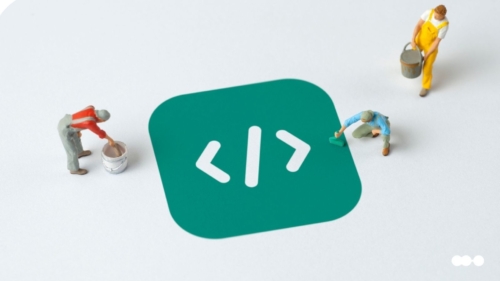
RPA vs. BPA: What are the differences?
Robotic process automation (RPA) and business process automation (BPA) are two different technologies businesses use to improve the speed, accuracy, and efficiency of their processes.
Both RPA and BPA reduce the amount of time people spend on repetitive tasks, but they differ in terms of specificity and capabilities. RPA focuses on automating individual, discrete tasks (such as reading a document or retrieving data from a system). BPA is designed to automate multiple elements of an end-to-end process, but BPA can also help businesses model, optimize, and orchestrate their workflows.
RPA solves problems at the task level. BPA solves problems at the workflow or process level.
What is robotic process automation (RPA)?
Robotic process automation refers to a block of code that completes a specific task based on program rules. These blocks of code, sometimes called “scripts” or “bots,” mimic the kinds of tasks that a human would complete. For example, bots can log in to applications, read invoices, copy and paste data, or match/validate items in a system.
In order to deploy RPA, the task that is to be automated must be thoroughly documented by a subject matter expert (SME). Then the steps in the task are converted into lines of code that include all the rules and information necessary for the bot to complete the action. Each bot automates one specific task.
When to use RPA
RPA is a good choice for:
- Tasks that are simple, straightforward, and rules-based.
- Tasks involving structured, consistent data.
RPA is not a good choice for:
- Tasks with a high rate of variance in data or procedure.
- Tasks that change often since each change will require additional coding.
- Optimizing end-to-end processes.
- Orchestrating processes.

HBR: “How Many of Your Daily Tasks Could Be Automated?”
Find the right automation tool for your business with the Buyer’s Guide to Automation Platforms
What is business process automation (BPA)?
BPA takes a more holistic approach to automation. BPA software is designed to improve the speed and accuracy of tasks and end-to-end processes, but BPA also offers features that support overall business process management. BPA software includes process modeling and orchestration capabilities, as well as features that support collaboration and analytics. In this sense, BPA is not merely a tool for automation: it’s an entire toolbox for building, optimizing, and monitoring entire families of processes and workflows.
BPA features and benefits
| Feature | Benefit |
|---|---|
| Process modeling | Users plan, build, and illustrate processes within the software. Low-code capabilities mean changes can be made quickly, without adding to the IT backlog. |
| Process orchestration | BPA unifies people, information, apps, and systems in order to create seamless, harmonious processes that transcend team or departmental boundaries. Collaboration is enhanced, silos are dissolved. |
| Integrations | Eliminates data silos, prevents the need for repetitive data entry, and ensures seamless user experiences for customers and employees. |
| Collaboration support | Process owners can grant access to any user within the organization, in an effort to achieve the process goal. Permissioned users have shared access and/or visibility into communication channels and work item statuses. |
| Rules & conditionals | Prevents missing or incomplete information, and automatically routes work items to the next phase of the workflow. |
| Reporting & analytics | Users can create customizable dashboards and reports to monitor process health, measure KPIs and metrics, and drive business strategy. |
See how Pipefy’s low-code BPA accelerates digital transformation
When to use BPA
BPA is a good choice for:
- Meeting complex goals such as improving user experiences, reducing error rates, or orchestrating processes
- Optimizing processes in which there are multiple outcomes, such as case management and service requests.
- Automating tasks or workflows that change often.
- Automating complex processes such as procurement or employee onboarding.
- Providing low-code automation capabilities for business users.
BPA is not a good choice for:
- Automating single, isolated tasks.
RPA vs. BPA: The verdict
RPA is a tactical solution best suited for automating specific tasks, especially those that mimic human activity (such as tasks completed using a keyboard). RPA works well with tasks that don’t change often and which don’t see much variance in their day-to-day execution. It’s worth noting here that RPA will not optimize tasks or processes, it simply brings automation to them in their existing form.
BPA is a strategic solution that businesses use to automate tasks, model processes, and orchestrate workflows throughout the organization. BPA software integrates with the existing tech stack and provides additional features such as collaboration and data analytics. BPA makes sense for companies with processes that need to be updated or modified often. BPA is ideal for businesses whose goals include — but aren’t limited to — automation.
Many companies rely on both RPA and BPA software to automate and improve their processes. Often these two complementary technologies are combined as part of broader hyperautomation or digital transformation initiatives.






